
How to Use SSR-40A: Examples, Pinouts, and Specs
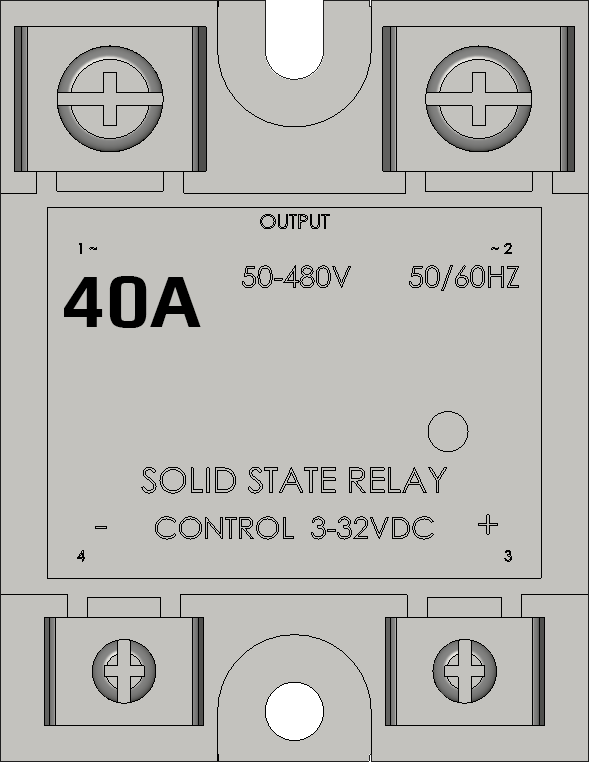
 Design with SSR-40A in Cirkit Designer
Design with SSR-40A in Cirkit DesignerIntroduction
The SSR-40A is a Solid State Relay (SSR) designed for switching electrical loads up to 40 Amps. Unlike traditional electromechanical relays, the SSR-40A uses semiconductor components to perform switching operations, eliminating the need for moving parts. This results in faster switching speeds, reduced wear and tear, and a longer operational lifespan. The SSR-40A is ideal for applications requiring high reliability and silent operation.
Explore Projects Built with SSR-40A
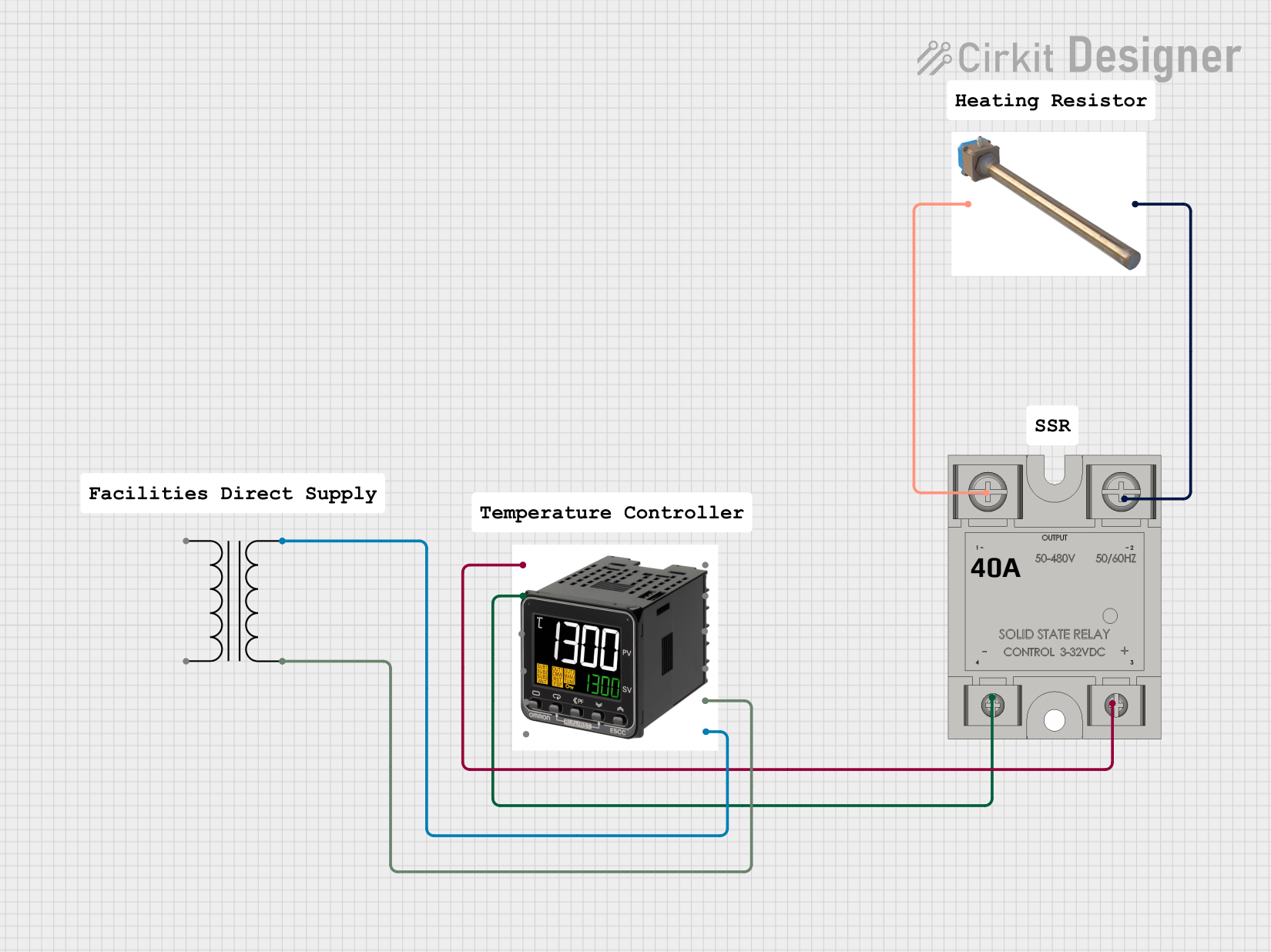
 Open Project in Cirkit Designer
Open Project in Cirkit Designer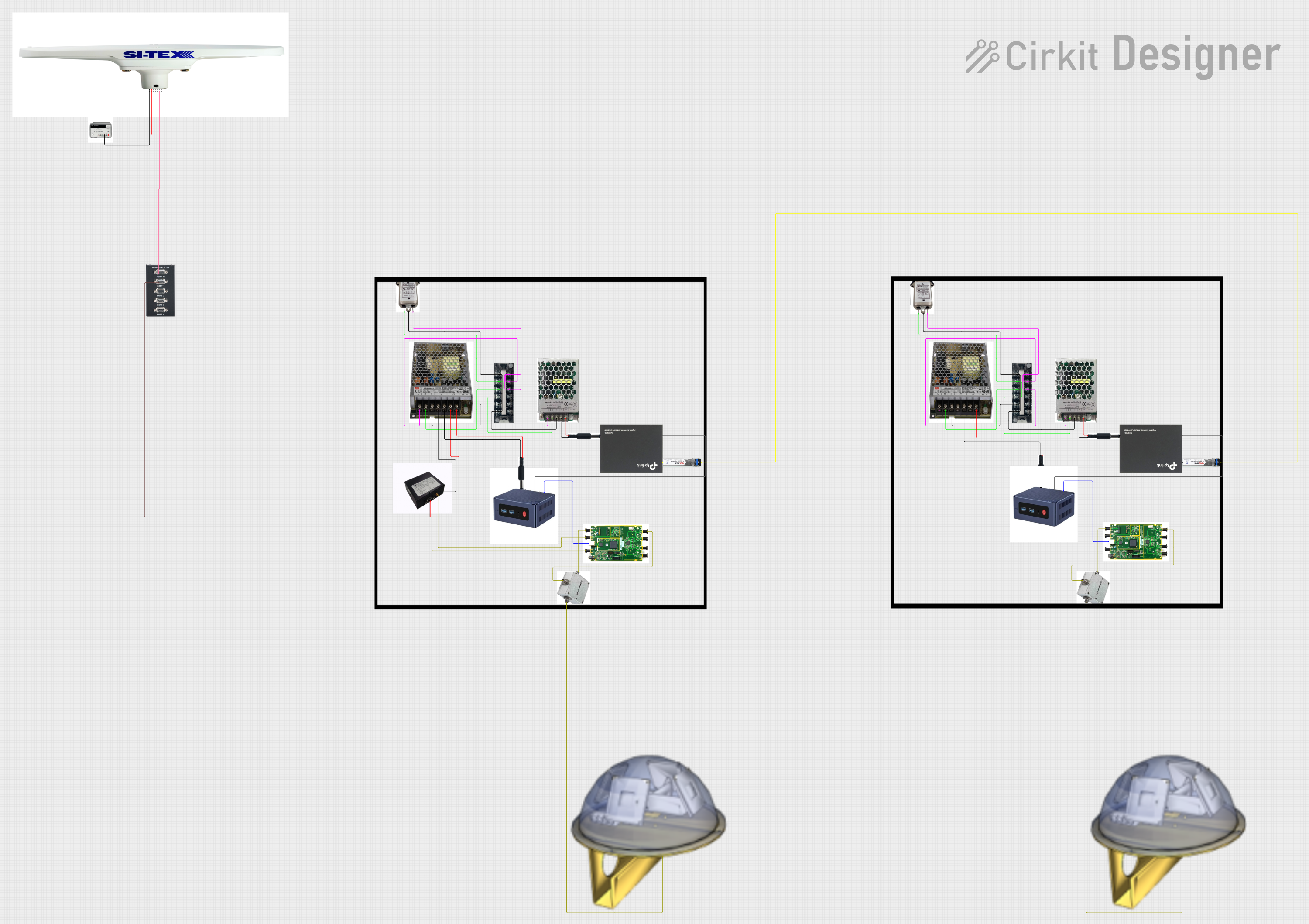
 Open Project in Cirkit Designer
Open Project in Cirkit Designer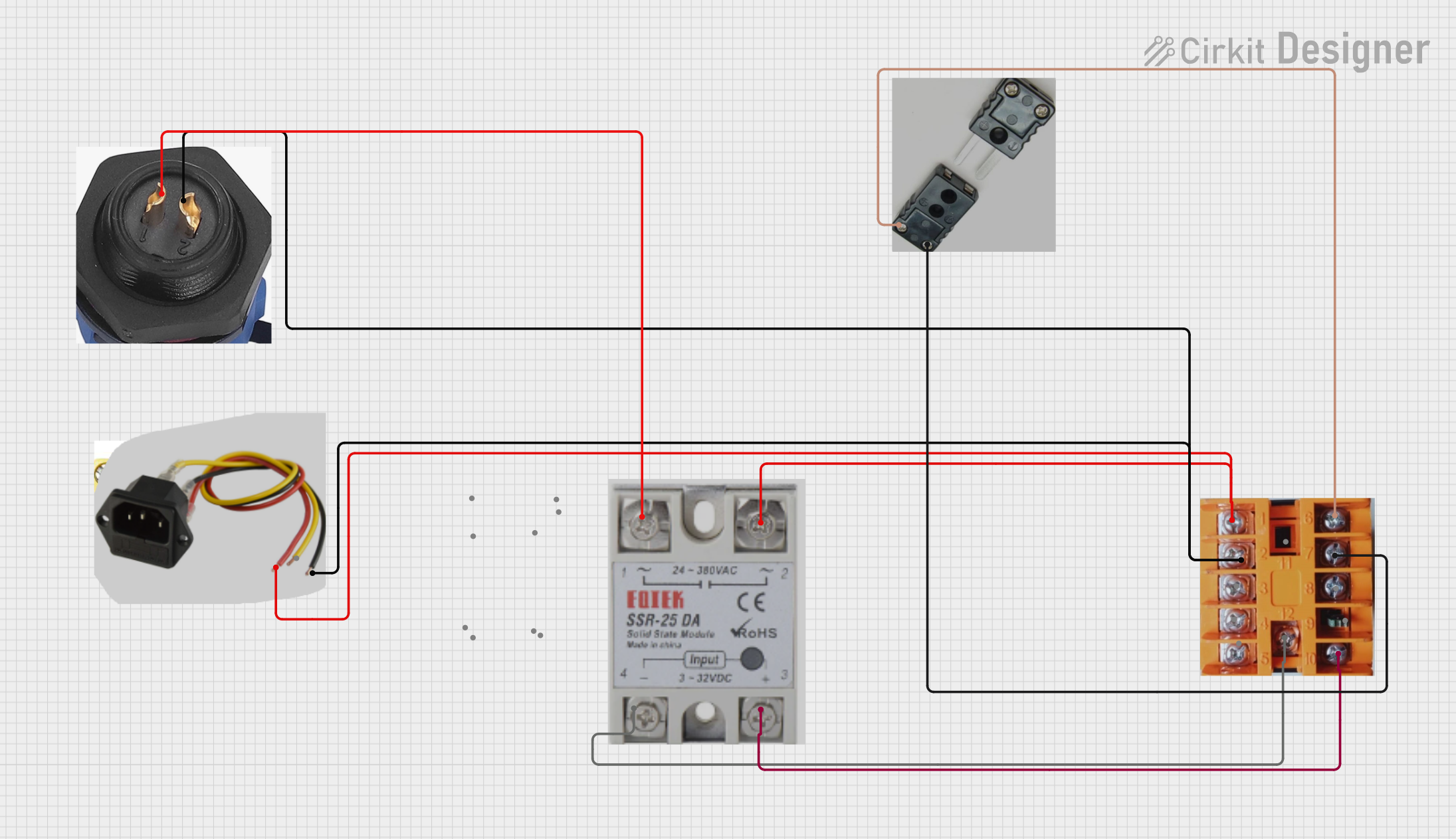
 Open Project in Cirkit Designer
Open Project in Cirkit Designer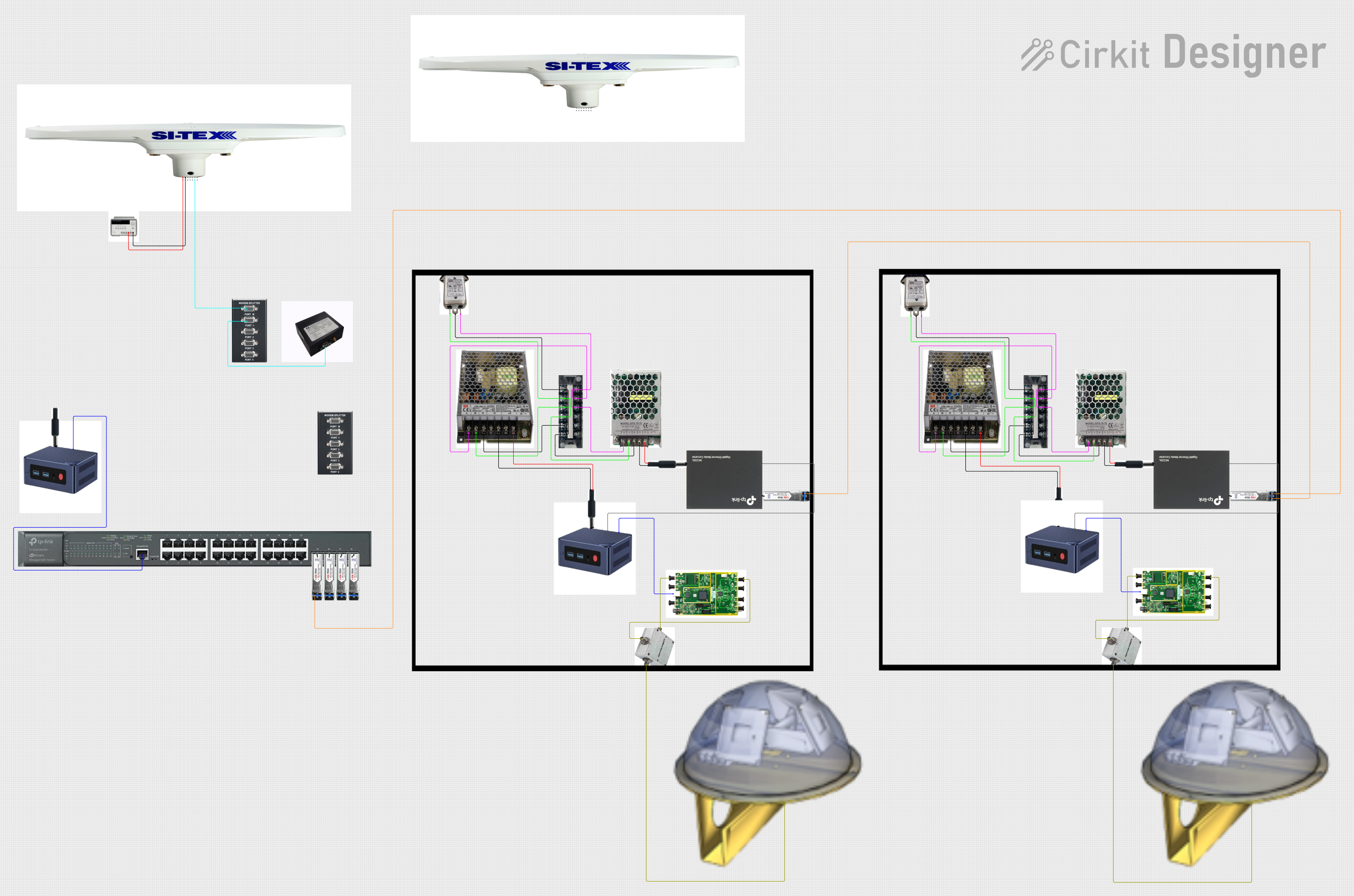
 Open Project in Cirkit Designer
Open Project in Cirkit DesignerExplore Projects Built with SSR-40A

 Open Project in Cirkit Designer
Open Project in Cirkit Designer
 Open Project in Cirkit Designer
Open Project in Cirkit Designer
 Open Project in Cirkit Designer
Open Project in Cirkit Designer
 Open Project in Cirkit Designer
Open Project in Cirkit DesignerCommon Applications and Use Cases
- Industrial automation and control systems
- Heating, ventilation, and air conditioning (HVAC) systems
- Motor control and speed regulation
- Lighting control in commercial and residential settings
- Temperature control in ovens, furnaces, and other heating devices
Technical Specifications
The SSR-40A is designed to handle high-power loads efficiently while maintaining safety and reliability. Below are its key technical details:
General Specifications
| Parameter | Value |
|---|---|
| Load Current Rating | 40 Amps |
| Load Voltage Range | 24V AC to 380V AC |
| Control Voltage Range | 3V DC to 32V DC |
| Trigger Current | ≤ 7.5 mA |
| On-State Voltage Drop | ≤ 1.6V |
| Isolation Voltage | ≥ 2500V AC |
| Operating Temperature | -30°C to +80°C |
| Switching Speed | ≤ 10 ms |
| Mounting Type | Panel Mount |
Pin Configuration and Descriptions
The SSR-40A has four terminals, as described in the table below:
| Pin Number | Label | Description |
|---|---|---|
| 1 | Input (+) | Positive terminal for the DC control signal |
| 2 | Input (-) | Negative terminal for the DC control signal |
| 3 | Load (AC ~) | One terminal of the AC load to be switched |
| 4 | Load (AC ~) | The other terminal of the AC load to be switched |
Usage Instructions
How to Use the SSR-40A in a Circuit
- Control Signal Connection: Connect the DC control signal to the input terminals (Pin 1 and Pin 2). Ensure the control voltage is within the specified range (3V DC to 32V DC).
- Load Connection: Connect the AC load to the load terminals (Pin 3 and Pin 4). The load voltage must be within the range of 24V AC to 380V AC.
- Power Supply: Ensure the power supply for the load and the control signal are properly isolated and meet the relay's specifications.
- Mounting: Secure the SSR-40A to a heat sink or panel to dissipate heat effectively, especially when operating at high currents.
Important Considerations and Best Practices
- Heat Dissipation: Use a heat sink or cooling fan to prevent overheating, as the SSR-40A generates heat during operation.
- Snubber Circuit: For inductive loads (e.g., motors), use a snubber circuit to suppress voltage spikes and protect the relay.
- Control Signal Isolation: Use an optocoupler or similar isolation device to protect the control circuit from high voltages.
- Wiring: Use appropriately rated wires and connectors to handle the high current and voltage.
Example: Controlling an AC Load with Arduino UNO
The SSR-40A can be easily controlled using an Arduino UNO. Below is an example circuit and code to toggle an AC load (e.g., a light bulb) using a digital pin.
Circuit Diagram
- Connect the SSR-40A's input terminals:
- Pin 1 (Input +) to Arduino digital pin 9.
- Pin 2 (Input -) to Arduino GND.
- Connect the AC load to the SSR-40A's load terminals (Pin 3 and Pin 4).
- Ensure the AC load and Arduino share a common ground.
Arduino Code
// Define the pin connected to the SSR control input
const int ssrPin = 9;
void setup() {
// Set the SSR pin as an output
pinMode(ssrPin, OUTPUT);
}
void loop() {
// Turn the SSR (and the connected load) ON
digitalWrite(ssrPin, HIGH);
delay(5000); // Keep the load ON for 5 seconds
// Turn the SSR (and the connected load) OFF
digitalWrite(ssrPin, LOW);
delay(5000); // Keep the load OFF for 5 seconds
}
Troubleshooting and FAQs
Common Issues and Solutions
SSR Not Switching the Load
- Cause: Insufficient control voltage or current.
- Solution: Verify that the control voltage is within the range of 3V DC to 32V DC and the trigger current is sufficient.
Excessive Heat Generation
- Cause: High load current without proper heat dissipation.
- Solution: Install a heat sink or cooling fan to manage heat effectively.
Load Not Turning Off Completely
- Cause: Leakage current in the SSR.
- Solution: Ensure the load's minimum operating current is higher than the SSR's leakage current.
Voltage Spikes or Noise
- Cause: Inductive loads causing back EMF.
- Solution: Use a snubber circuit or varistor to suppress voltage spikes.
FAQs
Q1: Can the SSR-40A be used with DC loads?
A1: No, the SSR-40A is designed for AC loads only. For DC loads, use a DC-specific SSR.
Q2: What happens if the control voltage exceeds 32V DC?
A2: Exceeding the control voltage range can damage the SSR. Always ensure the control voltage stays within the specified range.
Q3: Can I use the SSR-40A without a heat sink?
A3: While possible for low-current applications, it is strongly recommended to use a heat sink for currents above 10A to prevent overheating.
Q4: Is the SSR-40A polarity-sensitive on the load side?
A4: No, the load terminals (Pin 3 and Pin 4) are not polarity-sensitive, as the SSR is designed for AC loads.